There are a great number of benefits to eating with the seasons.
The two biggest benefits are higher quality and nutrition and reduced environmental impacts by not requiring out-of-season foods to be grown in monocultures and then shipped anywhere between 1500 and 2500 miles (the average food miles for foods in the U.S. and other nations).
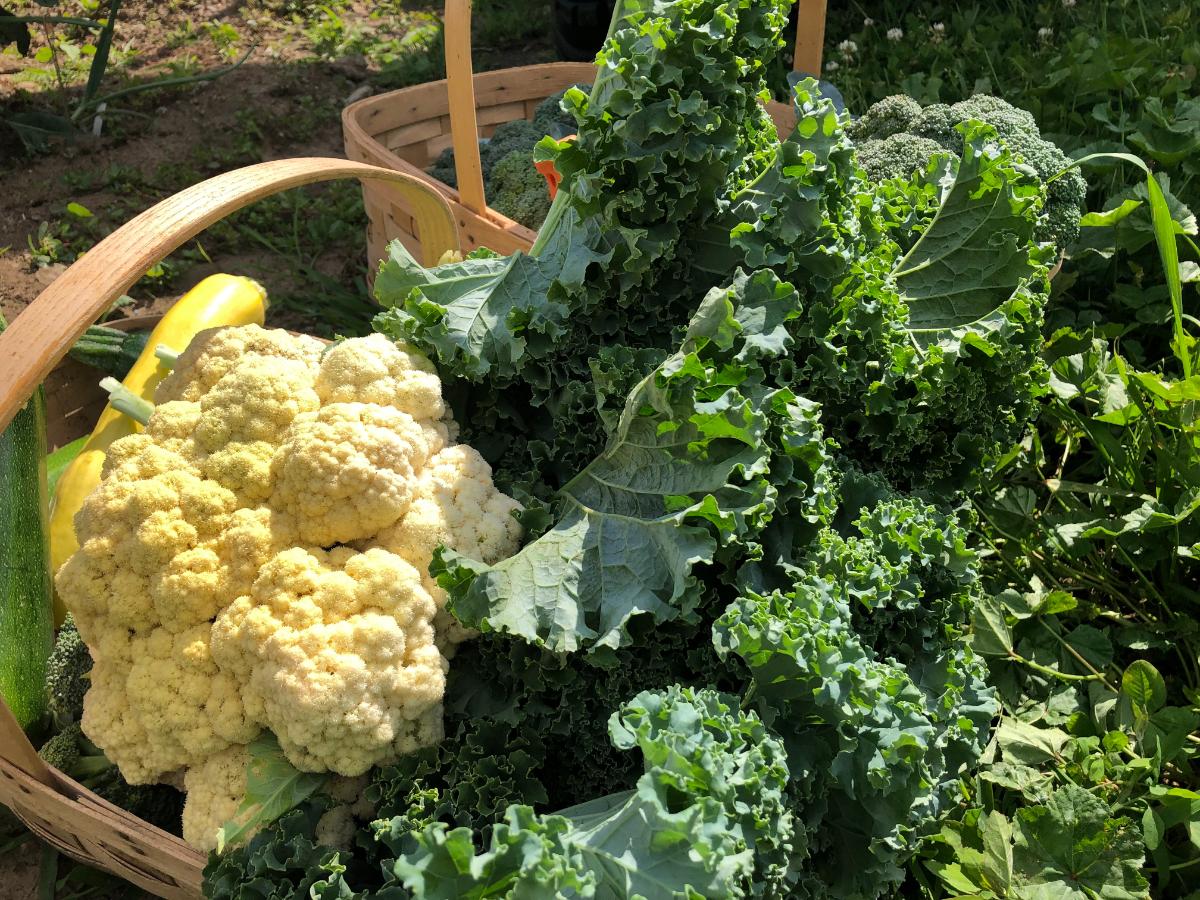
While many of us understand and love the idea of eating with the seasons (or seasonal eating, as it is often called), we aren’t always sure how to do that and maintain a well-balanced diet high in nutrition.
After all, many of us live in places where it is impossible to grow fresh food all year long!
With a few adjustments to what and how we eat, as well as how and where we grow, harvest, or buy that food, we can all do more to eat seasonally. It is possible, in fact, to only eat locally and with the seasons.
Let’s take a look at 14 ways you can move to a more local seasonal eating model.
Jump to:
- 1. Get Familiar with What’s in Season and When
- 2. Change What You Eat
- 3. Meal Prep
- 4. Change Where You Eat
- 5. Grow Your Own
- 6. Grow indoor greens
- 7. Grow and Store Storage Crops
- 8. Preserve the Harvest
- 9. Shop Local First
- 10. Shop Winter Farmers’ Markets
- 11. Look for Local Labels in Grocery Stores
- 12. Extend Your Season with Season Extension Methods
- 13. Find Local Growers Who Do Season Extension and/Or Winter Growing
- 14. Join Local CSA’s
- Eating With the Seasons: Worth it for Your Health, Worth it for Your World
1. Get Familiar with What’s in Season and When

First, in order to know what you should be eating, you’ll need to know more about your local seasons and seasonal food availability.
Here are some tips to help you get more familiar with the nuances of your local growing seasons and what is available locally when:
- Pay attention to what grows and when
- Visit farmers’ markets to see what’s in and what’s fresh
- Even if you plan to grow your own, seeing what is offered in local markets is useful -- it can show you more of the possibilities for your home gardening and growing, too
- Take notice of what home gardeners, farms, and growers are selling on the side of the road and in vegetable and farm stands
- Start following gardening sites and almanacs and see what they are talking about, growing and harvesting at different times of the year
- Subscribe to newsletters from local growing entities and agricultural or gardening groups
If you are in the U.S., check out the USDA’s guide to seasonal produce. It will tell you when to look for various types of fruits, vegetables, and berries.
The UK has similar resources, as do many other nations.
2. Change What You Eat
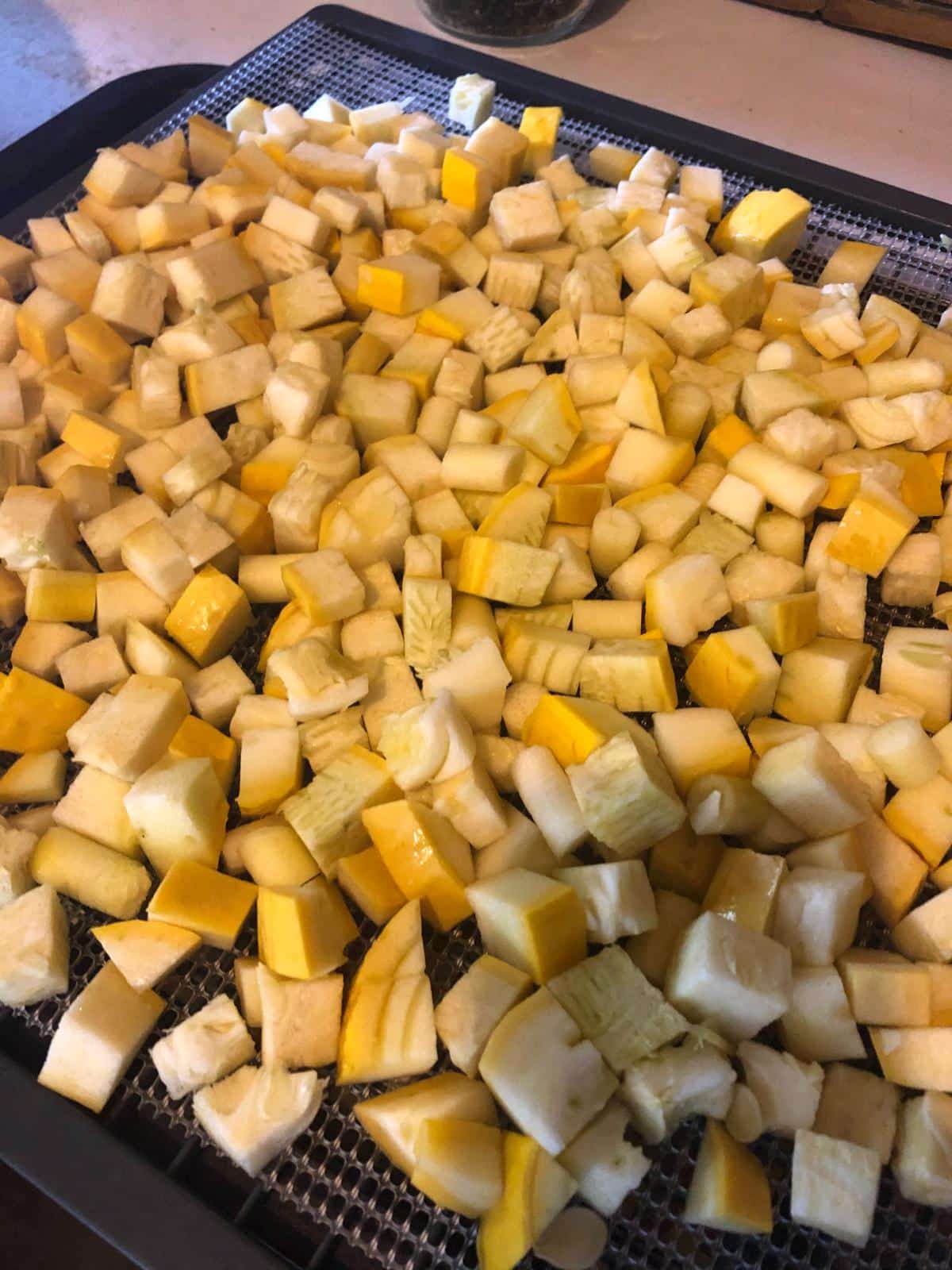
The majority of people today shop and eat what they find at the grocery store. There are all sorts of products and foods available.
To eat with the seasons, we often have to change our focus and how and what we eat.
Typically, a switch to eating with the seasons requires us to focus more on whole foods, meats, dry stored whole ingredients, and fresh or preserved produce.
This typically means you’ll focus more on cooking and preparing your own food. It often requires a shift from prepared and convenience foods. It may very well mean you will need to think of new dishes to prepare and possibly cut some dishes out of your rotation.
3. Meal Prep

Life today is busy. It’s hard to cook and prepare your own food. It’s really hard to forgo the convenience of prepared products and grab-and-go foods.
Doing more meal prep is a way to find a happy medium.
- Once a week, prepare meals and snacks from scratch using local, whole ingredients
- Prep and freeze meals for the future, in both large family sizes and individual sizes; these will be good for busy nights and for when you run out of time to prep weekly meals for lunches, etc.
- When you cook, cook a little more than you need for the night (or day). Package the leftovers in meal prep containers that are easy to grab for healthy, whole lunches or busy evening dinners
4. Change Where You Eat
Committing to local, seasonal eating is easier at home than it is outside of the house. Eating out and convenience foods are nice. Let’s be honest.
You do not need to give these things up, but you will need to shift your focus and your patronage to local businesses that support your efforts and prioritize local, seasonal eating.
Pay attention to which local stores and restaurants use fresh, whole ingredients from local producers and growers. Make those the places you go to when you go out to eat.
See if any offer house-made convenience foods or frozen meals. Ask where they source their ingredients from. Prioritize those who are buying local and using seasonal ingredients.
5. Grow Your Own
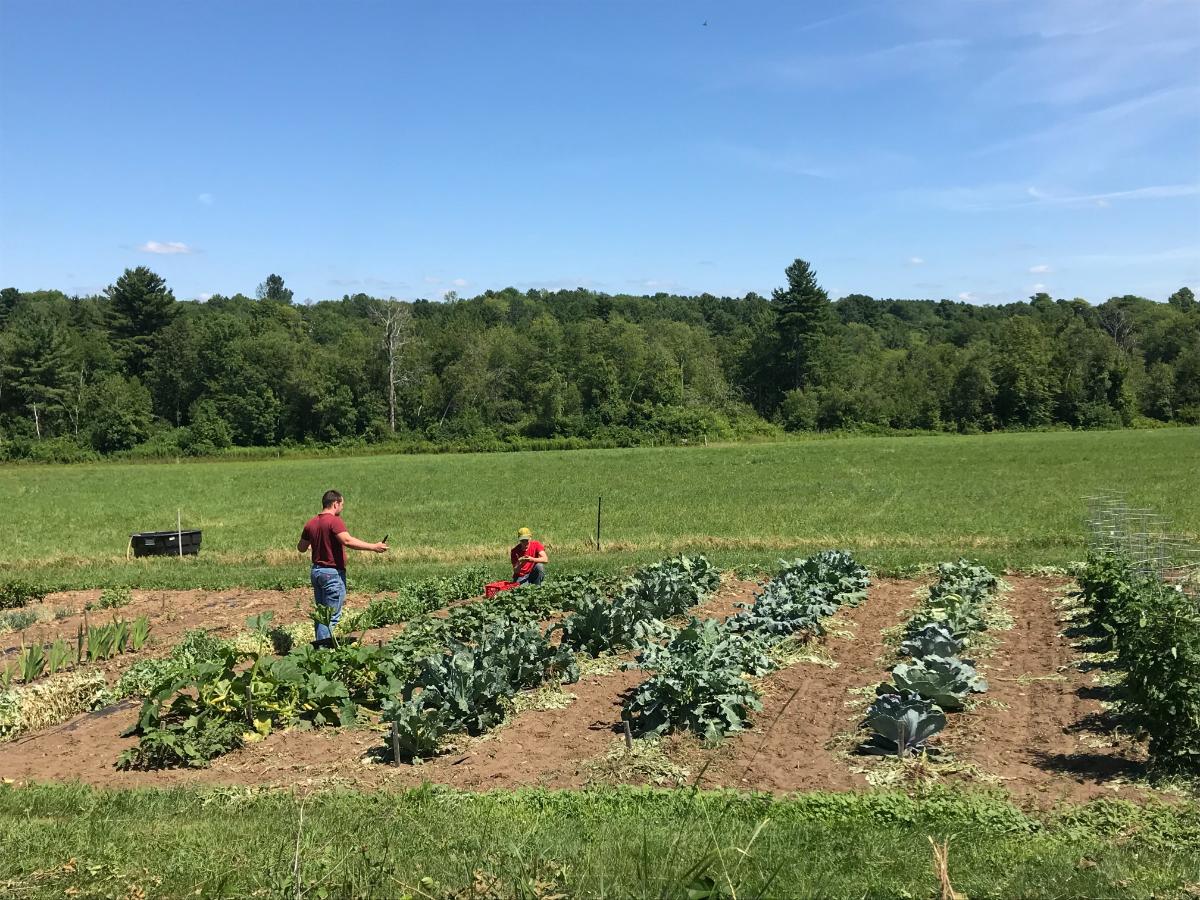
There is no shorter food chain or lower impact on the environment than the food you grow at home yourself.
For the highest possible level of control over your food, grow your own!
- Start a garden, even if it’s only a container garden
- Focus on the foods you use and love the most
- Grow what you can handle and what you can handle using and preserving
- If you find it hard to grow all your own food, focus on some favorites or what’s easiest and most reasonable for you to grow, and buy the rest from local farm stands, farmers’ markets, and growers
- Then, share whatever you don’t need with others to help spread the benefits of seasonal eating!
If you don’t have the time, space, or knowledge to grow your own food, join a local community garden. At a community garden site, you can access soil and space to grow in. You can also trade labor for food, and there are usually directors and other members who share their knowledge so you can learn more.
Don’t be intimidated by growing your own food. You can always start small and build up from there. Any inroads to better seasonal eating are positive and worthwhile!
6. Grow indoor greens
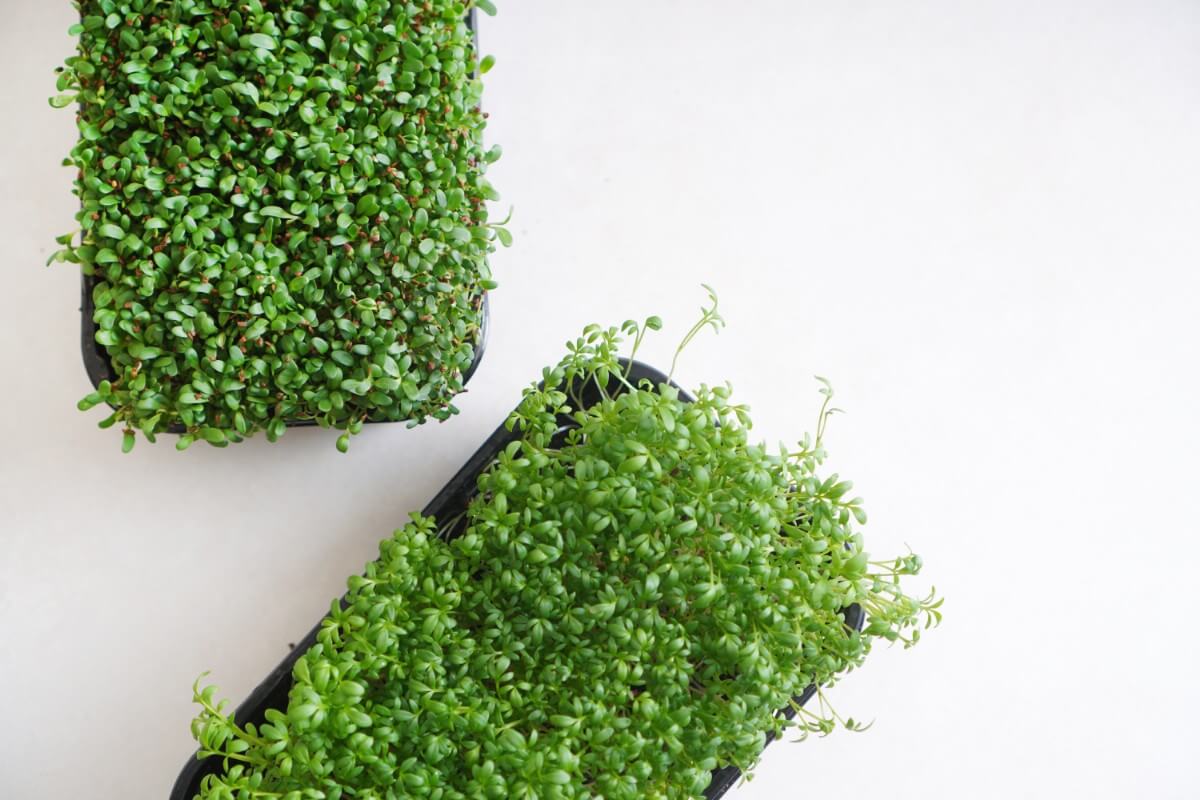
One of the hardest parts of eating with the seasons is when you live somewhere where you can’t grow all year long.
But even then, you can grow a lot to supplement your preserved foods and storage crops by growing some fresh food indoors.
You don’t have to take on building a huge setup with counterproductive utility use, either. There are several things that you can grow just in a sunny window, or with no light at all. You’re already heating your house, and the temperature that is comfortable to you will be comfortable enough for some nice greens and vegetables to grow, too.
Some low-impact, low-maintenance fresh foods you can grow indoors at any time of the year include:
- Baby lettuce
- Microgreens
- Sprouts
- Shoots
- Herbs
With a little additional setup and energy-efficient grow lights, you can also grow miniature plants like mini cherry tomatoes and mini citrus trees to round out your seasonal fresh eating.
7. Grow and Store Storage Crops
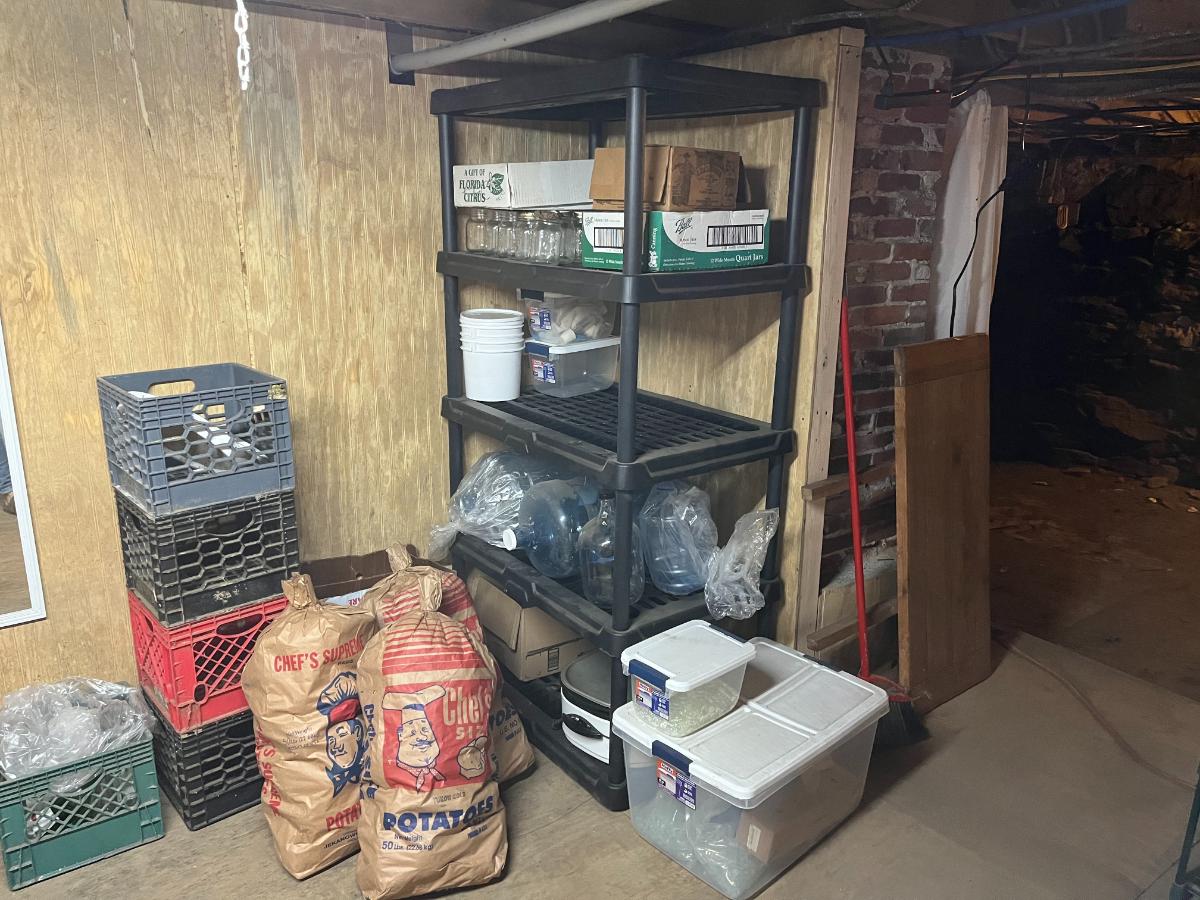
Storage crops, usually kept in unheated or minimally heated areas of the home like basements and attics or root cellars, are how people stored and ate their seasonal produce just a few short generations ago.
We can do the same.
Storage fruits and vegetables -- things like apples, onions, potatoes, squash, cabbages, and more -- are among the easiest things to grow. They are also very easy to harvest, prep, and store.
There is no preserving or preparation other than cleaning and packing for storing. It takes a fraction of the time of other preservation methods like freezing, dehydrating, or canning (which are all also good options).
Here are 28 things that you can grow yourself or buy locally and save in a cool storage area -- without refrigeration, and for months!
8. Preserve the Harvest
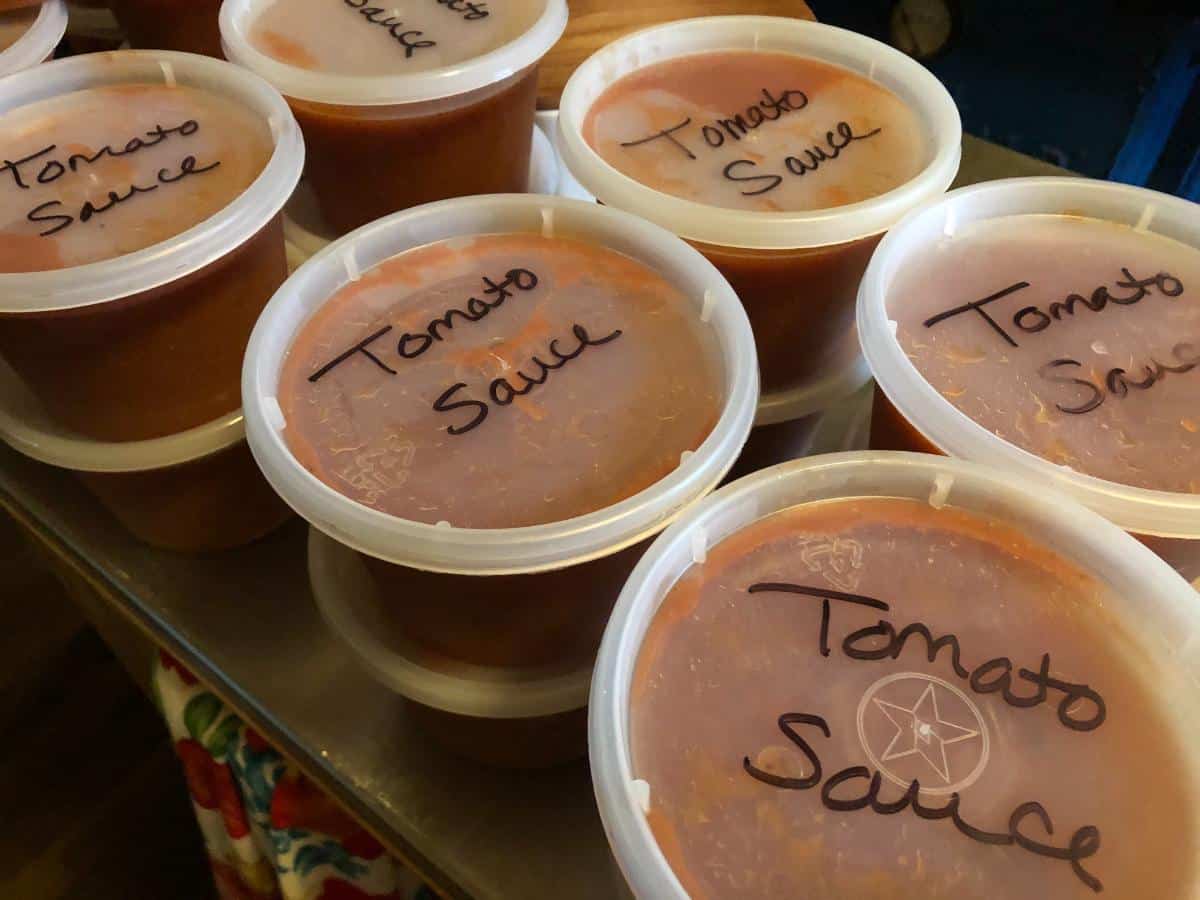
Preserving the harvest -- whether it is what you grew yourself or what a local grower has grown -- is the next best thing you can do to access and eat fresh. The fact of the matter is that fresh fruits and vegetables don’t grow in the winter in many if not most, areas.
Preserving captures the peak nutrition of seasonal foods. There are a number of options for preserving seasonal bulk harvests to take you through the winter months. They include
- Canning
- Freezing
- Dehydrating
- Fermenting
- Pickling
WebMD highlights preserving higher-quality seasonal foods as a means of eating seasonally and maintaining a healthy, balanced diet.
They specifically mention freezing, canning, pickling, and dehydrating as viable ways to capture the best that local in season food has to offer. These methods preserve food at its highest peak of nutrition and quality (which, in the end, is higher than that of food that is picked and shipped underripe and at a lower level of nutrition).
9. Shop Local First
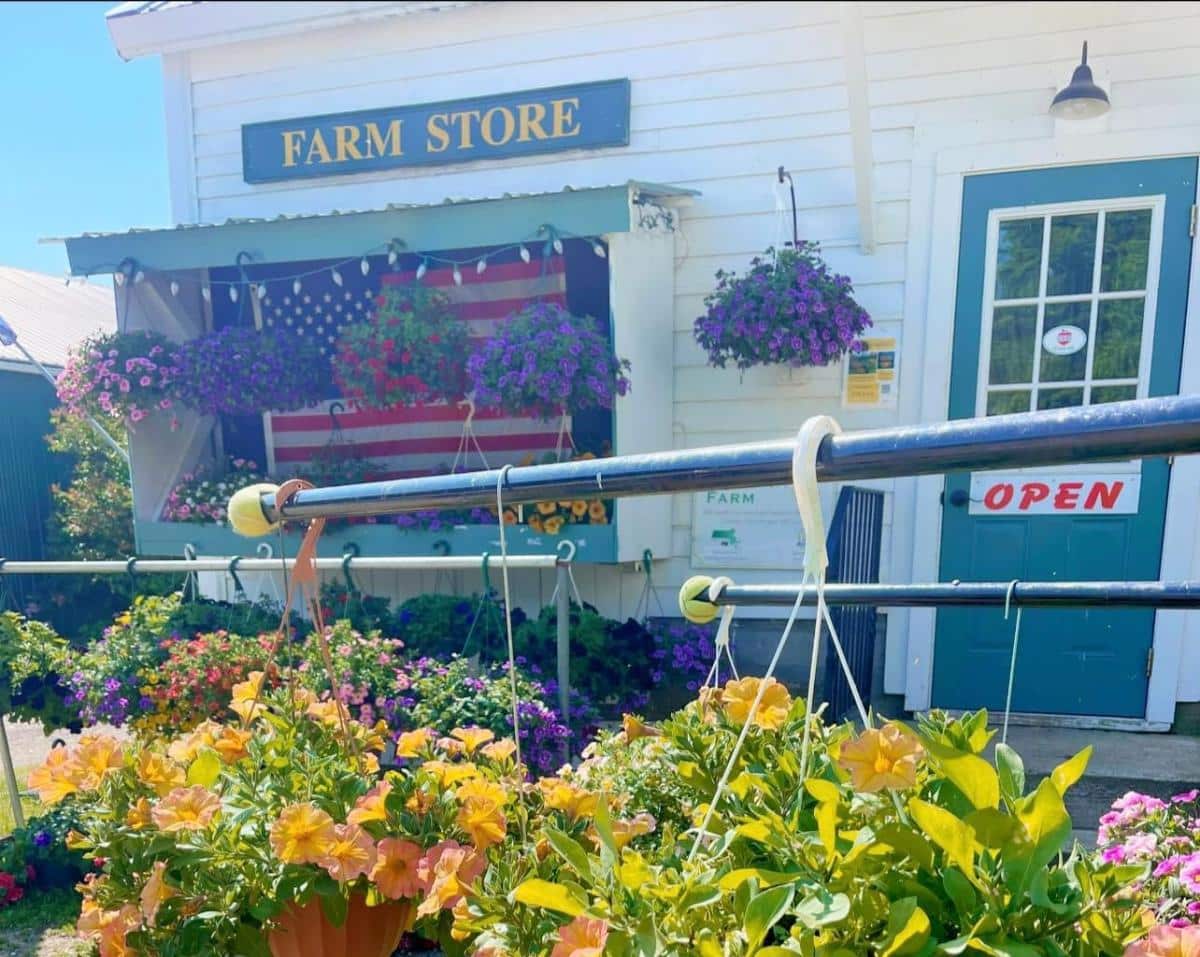
When you don’t grow it yourself, the next best thing to do is to buy local. That ensures that you get the freshest food and produce as close to the time of harvesting as possible. It ensures the highest level of nutrition, fullest natural ripening, quality, and maturity, and the lowest environmental impact from excessive food miles.
It also highlights what is really in season in your area.
Places to shop locally for seasonal foods include:
- Farmers’ markets
- Roadside stands (support your friends and neighbors, too!)
- Farm stores
- Local food co-ops and independent stores
10. Shop Winter Farmers’ Markets
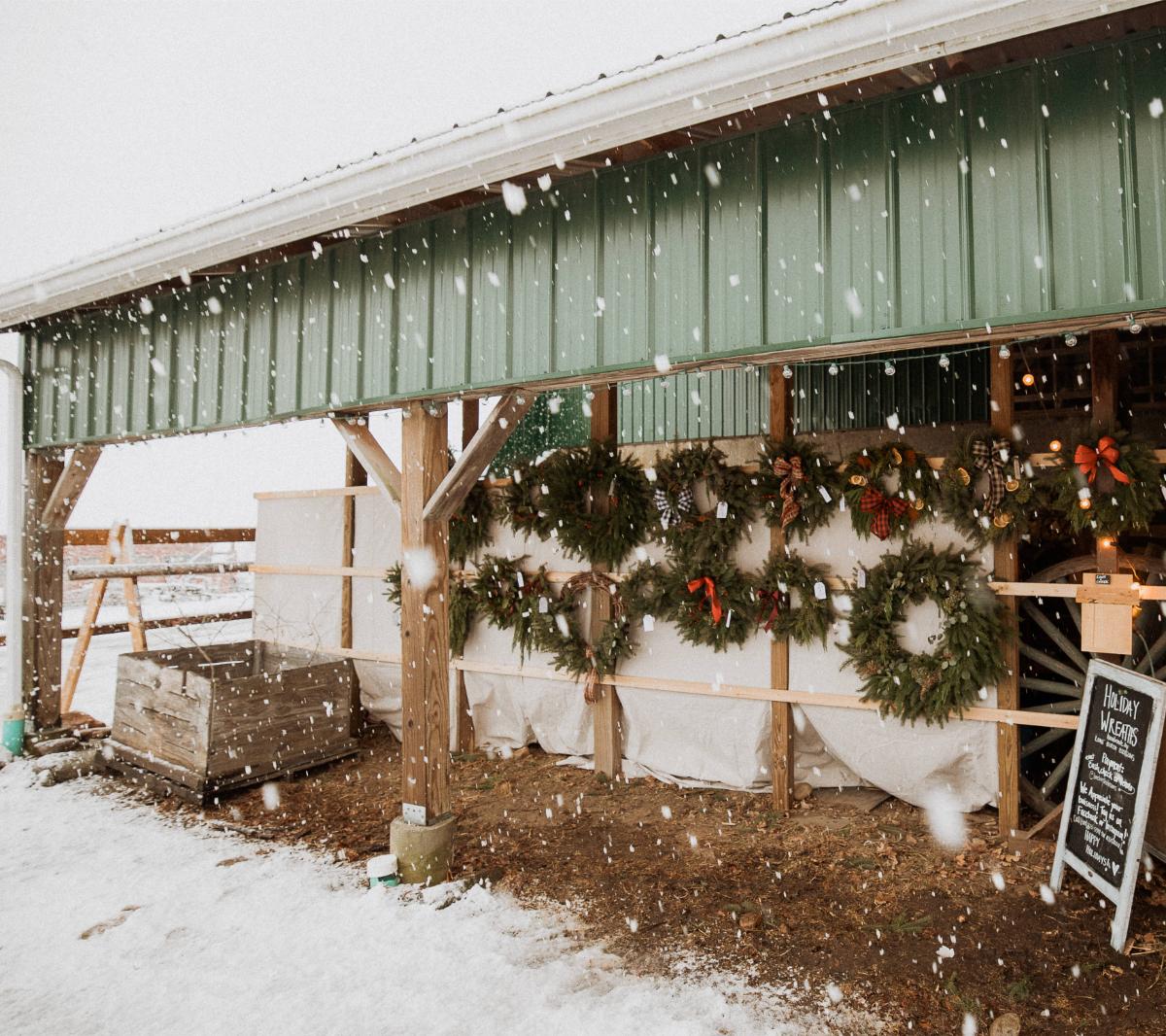
Winter growing is easier for those who make it their living. In Addition, you may find many local producers and growers who have products to offer throughout the winter. They plan their farm and business models to include winter distribution and winter markets.
At a good local winter farmers’ market, you can find value-added products, prepared products, preserved fruits and vegetables, and seasonally grown and stored storage crops that the farmers sell during the winter months.
Potatoes, squash, onions, garlic, cabbage, apples, radishes, carrots, root crops, sweet potatoes, and many more are all things that farmers store and sell in the winter.
You can often also find fresh crops of cold-hardy produce that are grown in high tunnels or other systems like hydroponic systems. These will often include things like kale, spinach, lettuce, chard, greens, bok choy, and many others that can be grown even in cold climates throughout the winter with high tunnels and season extension methods.
11. Look for Local Labels in Grocery Stores
Grocery stores can sometimes be good resources for locally grown seasonal food and produce, too. A lot depends on the size of the chain and their commitment to local and seasonal eating.
It is worth scouting your larger local grocers to see what they carry for local foods. Often, the seasonal foods will be what are in abundance and what are on sale.
Check to see where the food was produced, grown, and distributed. Look for signs featuring local foods.
12. Extend Your Season with Season Extension Methods
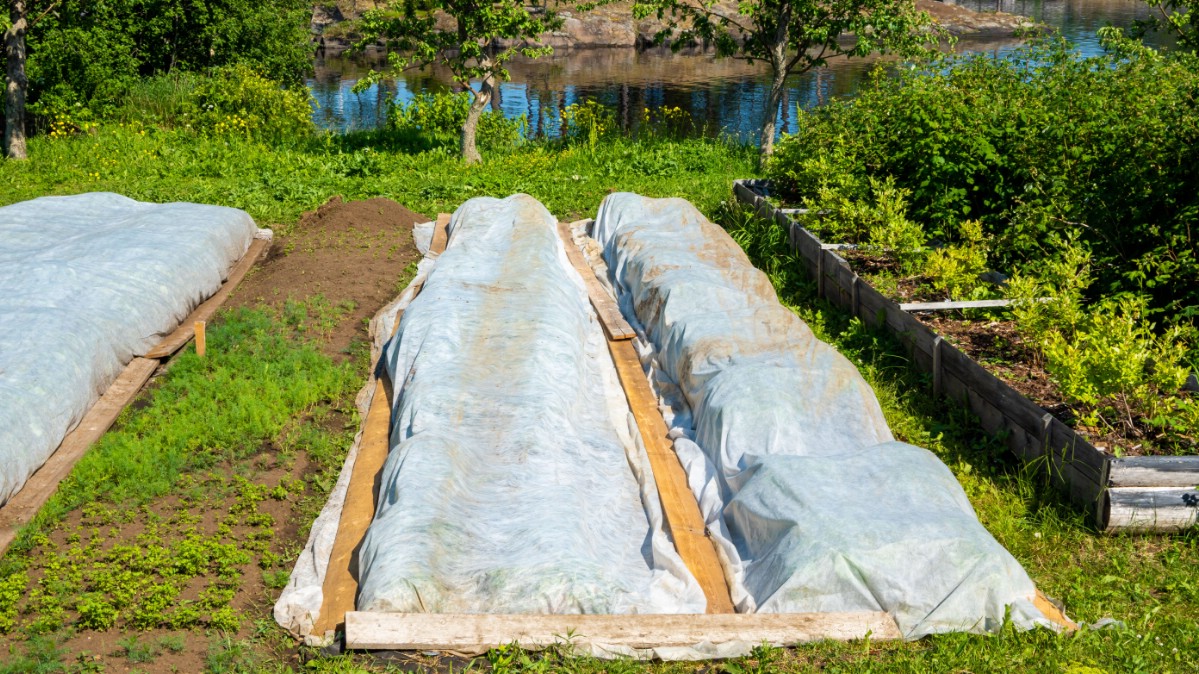
You can use the same types of season extension methods to prolong your own home growing season as larger growers and commercial growers do.
A high tunnel or greenhouse does not have to be big or overly expensive to grow enough fresh food for your household. Even without heating and supplemental lighting, there’s a lot that can grow in an unheated tunnel for a lot longer than you can grow in the open air.
There is a lot you can do to extend your season without a large investment in a high tunnel, though (though over the long term, a tunnel could be a useful investment with great return).
Garden soil holds heat and stays warm enough to grow cool-season greens and vegetables for a long time. Many areas can grow through the fall and into the winter months. You can take advantage of soil warmth with season extension techniques.
Some good ways to extend the season in a home garden include:
- Cloches
- Frost fabrics
- Caterpillar or low tunnels
- Cold frames
- Hot beds
13. Find Local Growers Who Do Season Extension and/Or Winter Growing
If you’re not interested in or not able to grow your own during the fall and winter months, find local growers who do.
Growers need to maximize their harvests and selling times. Many have adopted some excellent fall, winter, and early spring growing methods.
See who might be growing year-round in your area. You can find a lot more seasonal eating options to choose from this way!
14. Join Local CSA’s
CSA stands for Community Supported Agriculture. Joining CSA is one of the best ways to eat seasonally.
CSAs also help farmers generate important revenue during months of the year when income is low and cash flow is difficult to come by.
Usually, you will buy into a CSA before the food is grown for the season. Your share is usually paid for before it is grown and before you collect your food. After the initial buy in, there are no more payments for you to make.
In return, during the growing season, you get a share of the harvest. The share will include a variety of in-season food or produce.
Typically, you will have an assigned pickup time and location. All the rest of the work is done for you -- the share will be boxed and ready for distribution and you don’t even need to think about what you will buy.
CSAs are also a good way to learn more about the food and produce that is grown around you. You will often get things you’d never think to buy or grow yourself. It can be fun and interesting to learn about new kinds of food, fruits, and vegetables and discover ways to use them.
There are all sorts of CSA’s, including spring CSA’s, summer CSA’s, and even off-season fall and winter CSA’s (which usually include a mix of cold-weather crops grown in extension methods and storage crops like root crops).
CSA’s started with vegetable growers, but the base of offerings has expanded to include meat CSA and farm shares, flowers, and CSA’s for locally made value-added and preserved products.
Even if you do grow much or all of your own food, joining a local CSA (especially for colder months) is an excellent way to fill the time gap in your growing and harvesting.
Eating With the Seasons: Worth it for Your Health, Worth it for Your World
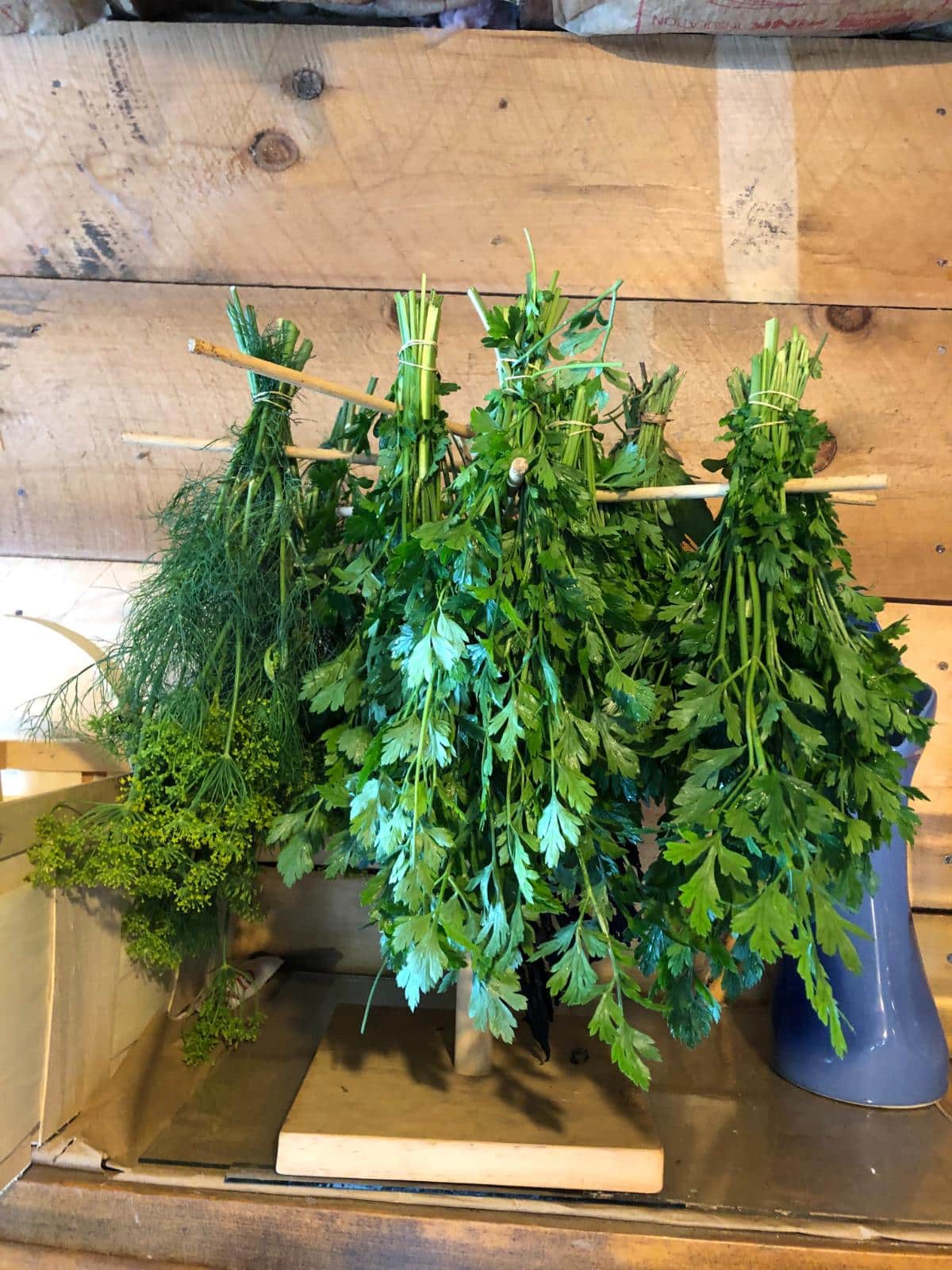
It’s hard to argue against eating with the seasons. This is a more traditional way of eating. Historically, we ate more healthfully and with much less impact on the world and the environment.
Though our busy modern lives and eating habits can mean that we have to adjust and make more of an effort to eat seasonally, the tradeoff is worth it. Your health will thank you for it!


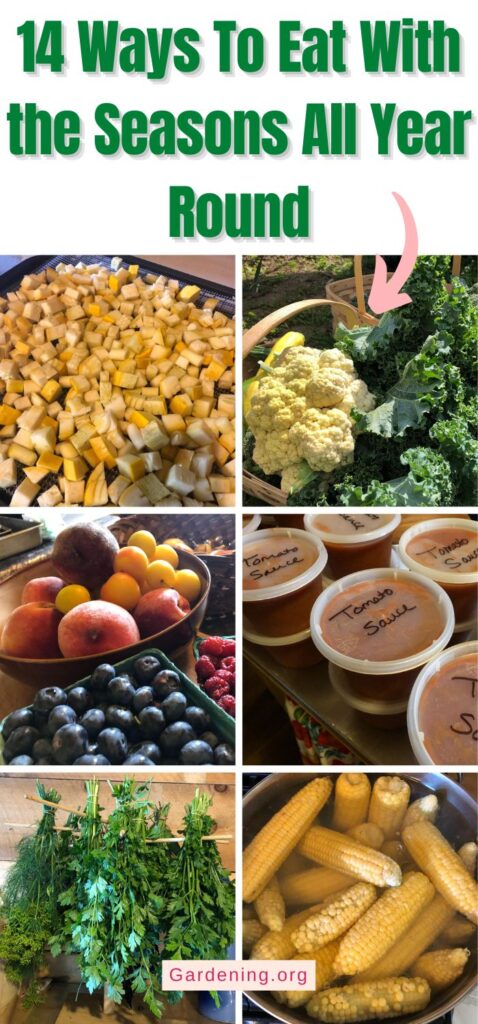

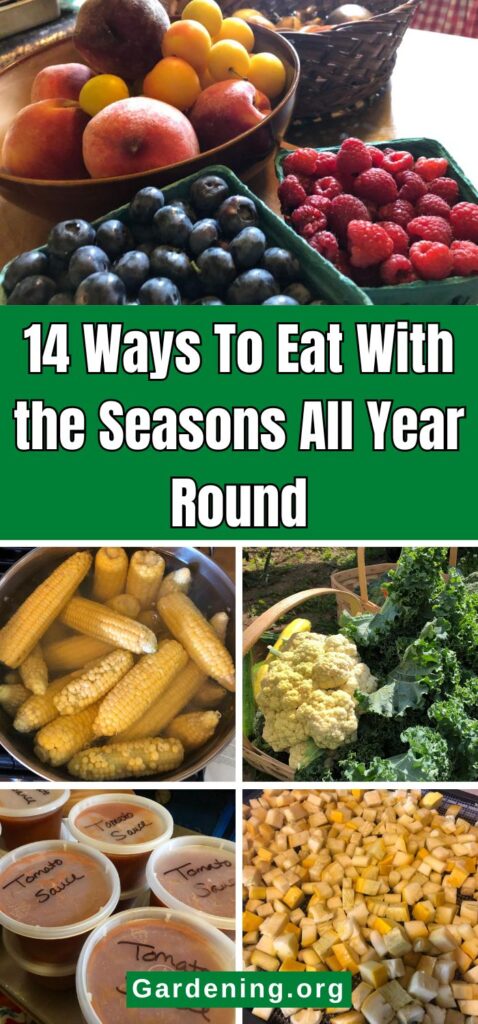




Leave a Reply